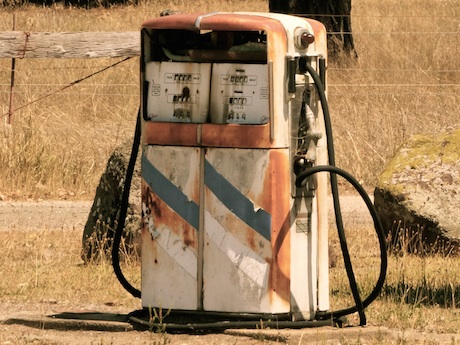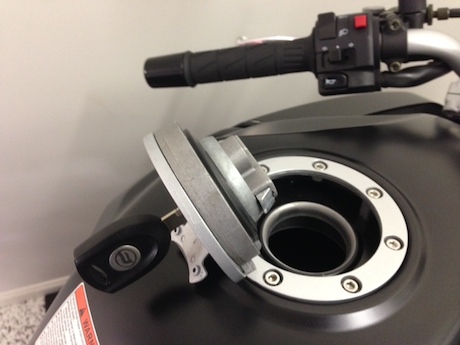Governments are continuing to push ethanol in fuel, despite it not being suitable for most motorcycles and the US Environmental Protection Agency calling for a cutback in its availability.
The latest government to consider an ethanol mandate is Queensland which has shown bipartisan support in the erroneous notion it is good for the environment and fuel prices.
While the odd dose of ethanol is ok for most bikes and fine for modern BMWs and American bikes on a more regular basis, it may cause long-term damage to most others.
And while ethanol is cheaper, it is also less efficient and, in the long-run, is not any more economical considering the engine damage it may cause.
Mandating that service stations stock a certain amount of ethanol-blended fuel is purely a political decision to appear environmentally friendly and aid farmers who probably should have switched to other crops years ago when the demand for sugar declined.
Ethanol is a type of alcohol produced by fermentation of crops such as sugarcane or grain. In Australia, ethanol content in unleaded fuel is limited to 10% (E10) but some countries use 85% or even higher in South America.
E10 is becoming more prevalent throughout Australian service stations and Queensland looks like following NSW where service stations have to stock a minimum requirement of the fuel.
The Federal Chamber of Automotive Industries lists the following motorcycles, scooters and ATVs for ethanol suitability:
| E5 Suitable | E10 Suitable | ||||
| BRAND | MODEL | Yes | No | Yes | No |
| Aprilia | All motorcycles and scooters | √ | √ | ||
| BMW | All motorcycles post 1986 | √ | √ | ||
| Buell | All motorcycles | √ | √ | ||
| Can-Am | All ATVs & SSVs | √ | √ | ||
| Ducati | All motorcycles | x | x | ||
| Harley Davidson | All motorcycles post 1986 | √ | √ | ||
| Honda | All motorcycles and All Terrain Vehicles | x | x | ||
| Hyosung | All motorcycles | x | x | ||
| Husqvarna | All motorcycles | √ | √ | ||
| Indian | All motorcycles | √ | √ | ||
| Kawasaki | All motorcycles and All Terrain Vehicles with the exception of the list below | x | x | ||
| Kawasaki | KLX110A/C/D (KLX110/L) 2006-2012 models, KL250J (Stockman) 2006-2012 models, KLX250T (KLX250S) 2009-2012 models, KLX250W (KLX250SF) 2010-2012 models, KL650E (KLR650) 2008-2012 models, KLE650A (Versys) 2008-2009 models, KLE650D (Versys ABS*) 2010-2012 models, ER650A (ER-6n) 2006-2008 models, ER650C (ER-6n) 2009 model, ER650D (ER-6n ABS*) 2009-2011 models, EX650A (ER-6f) 2006-2008 models, EX650C (Ninja 650R) 2009 model, EX650D (Ninja 650R ABS*) 2010-2011 models, ZR750L (Z750) 2007-2012 models, EJ800A (W800) 2011 2012 models, VN900B ( Vulcan 900 Classic) 2006-2011 models, VN900C (Vulcan 900 Custom) 2006-2011 models
* E10 fuel is approved for use in these LAMS variants models |
√ | √ | ||
| KTM | All motorcycles | √ | √ | ||
| Moto Guzzi |
All fuel-injected motorcycles
|
√ | √ | ||
| Piaggio | All fuel-injectedmotorcycles/scooters | √ | √ | ||
| Polaris | All motorcycles | √ | √ | ||
| Suzuki | All motorcycles and All Terrain Vehicles except the two stroke range | √ | √ | ||
| Triumph | All motorcycles | √ | √ | ||
| Vespa | All fuel-injectedmotorcycles/scooters | √ | √ | ||
| Victory | All motorcycles | √ | √ | ||
| Yamaha | All motorcycle and All Terrain Vehicles | ||||
Ethanol doesn’t work with carburettors or mechanical fuel injection. It is also a solvent which attacks metallic and rubber-based fuel lines, and has an affinity to water that can cause steel fuel tanks to rust.
But one of the confusing things for riders is the octane rating. (Octane is a measure of a fuel’s ability to resist engine knocking or pinging which is an uncontrolled burn in the engine that can cause damage. Higher octane fuels resist knocking.)
Most E10 in Australia is rated at 95 RON which seems like it could be suitable for bikes that require that higher octane rating. (In America it has a lot lower RON ratings as their highest RON fuel is only 91.)
RACQ executive manager technical and safety policy, Steve Spalding, warns that ethanol-blended, higher-octane fuels may not necessarily meet the correct fuel requirements for a vehicle designated to run on PULP.
While the RON may be high enough, there is another property in fuel, called Motor Octane Number (MON), which is rarely specified on the bowser.
MON is usually about 10 numbers lower than RON, so a MON of 85 would be ok for a bike rated at 95 RON.
However, ethanol fuels have much lower MON numbers than their RON which could be too low for your bike.

Either ask the service/gas station for the MON rating or fill up non-ethanol premium unleaded fuel of 95 RON or higher.
It is always best to have a higher octane rating than a lower one even though modern engine management systems have knock sensors that can handle lower octane.
If there is no choice but to fill up with ethanol fuel, make sure your next fill is with a high-octane fuel.
Ethanol supporters say it lowers gas/fuel prices, furthers energy security by reducing reliance on foreign oil, and revitalises the rural community. However, even those debates are far from definitive and the environmental argument is far from proven.
But mainly it is not doing your hip pocket any favours, even though E10 is usually a few cents cheaper.
There is about 3% less energy content in a litre of E10 compared with unleaded fuel which means your engine performance and fuel economy will be 3% worse, or to put it another way, your range will be limited by 3%.
The price of E10 would need to be at least 3% less than ULP for riders to even break even on the fill. And then there is the long-term damage it could do to your engine.
The U.S. Environmental Protection Agency has acknowledged that ethanol can damage motorcycle engines and has proposed a cutback in its availability, not a mandate as Queensland wants.
The US agency says ethanol-blended fuels increase exhaust temperatures which can cause component failure.



